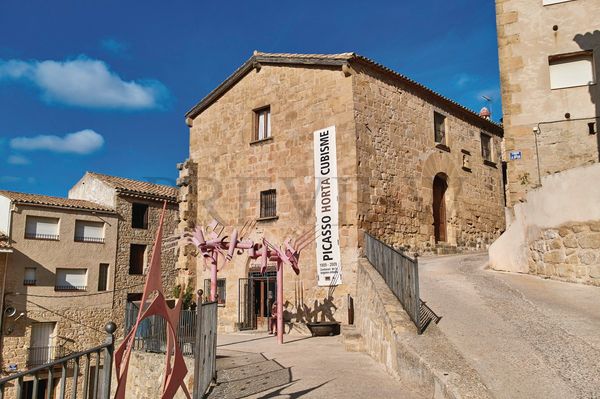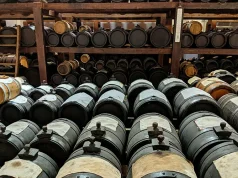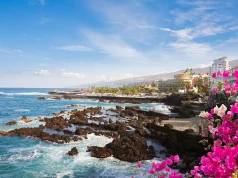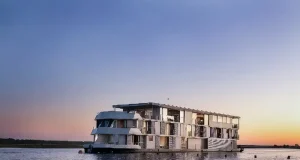
2023 is the year to remember the deaths of two of Catalonia’s geniuses of culture and architecture: Pablo Picasso (who died 50 years ago) and Lluís Domènech i Montaner (who passed a century ago). Visitors can celebrate the legacy of these remarkable men with more than eighty activities throughout the year in Catalonia.
Picasso’s Barcelona. That’s where it all started.
Many places in Barcelona are linked to Pablo Picasso (Malaga, 1881 – Mougins, 1973). During his life, even though he spent time in other cities, he always returned and reconnected with this Mediterranean city. He said once, “[Barcelona] is where it all began. There is where I understood how far I could go “.
Picasso was a universal artist with a special love for Barcelona. In fact, in 1895, he and his family moved to Porxos d’en Xifré. As a teenage artist in this historic Barcelona building, he got inspired and created some of the paintings which are now part of the collection of the Museu Picasso. Just a short walk from the artist’s home is the Llotja School of Fine Arts, where Picasso continued his artistic education.
Another exciting location related to Picasso’s life is Casa Martí (Els Quatre Gats), which was initially a tavern and one of Barcelona’s most influential artistic and cultural epicenters. There, Picasso exhibited his paintings for the first time.
Picasso’s influence can also be seen at the College of Architects of Catalonia. Visitors can appreciate the friezes on the façade created by Norwegian artist Carl Nesjarin in 1960, drawn specifically from Picasso’s designs.
For activities related to Picasso’s year, please click here.
For more places of interest in Barcelona related to Picasso, please click here.
A Small Town with a Big Story
Horta de Sant Joan (Tarragona Province) in southwestern Catalonia has a modest current population of just 1,200 residents. This unassuming village is an attractive touristic landscape for admirers of Picasso because he lived there during two different periods of his life, and it significantly impacted his artistic work.
In Horta, Picasso recovered from scarlet fever and found artistic inspiration to create landscape paintings, such as Quiquet’s Farmhouse (1898). A decade later, at the start of the Cubism movement, Picasso returned to Horta with his partner, model, and first muse, Fernande Olivier. Reservoir at Horta and Factory at Horta de Ebro are two of his major works from this period.
Since 1992, the former Horta Hospital has been open to visitors as the Picasso Centre. This museum explores Picasso’s artistic journey as a temporary resident in the town and exhibits reproductions of his work inspired by the region. Indeed, this small place greatly influenced one of the world’s greatest artists. In his own words, “Everything I know, I learned in Horta.”
For more places of interest in Catalonia related to Picasso, please click here.
Domènech i Montaner, the other most important Catalan modernist architect
Often, when people talk about the architecture of Barcelona, the name Antoni Gaudí stands out. However, Barcelona’s extraordinary urban landscape owes much of its stunning modernist style to another talented architect and Gaudi’s teacher: Lluís Domènech i Montaner (Barcelona, 1850 – 1923).
Nowadays, tourists can have an approach to Domènech i Montaner’s work when visiting Barcelona and Tarragona through different routes created for people who enjoy modernist architecture.
An Eclectic Modernist Creator
When exploring Barcelona’s architecture, it is impossible to miss the influence of the Modernisme that was part of the Renaixença Catalan, a nationalist rebirth movement of art and architecture during the second half of the 19th Century. One of the significant contributions and impacts of Domènech i Montaner’s work is the Catalan character reflected in his designs.
Domènech i Montaner’s eclectic creations cause great admiration among cultured travelers. Inspired by Constructive Rationalism and Hispanic-Arabic architecture, he integrated the curved lines typical of Modernism using exposed brick, mosaics, ceramics, sgraffito, and stained glass. All these influences contributed to his peculiar modernist style.
Domènech’s major works include The Palau de la Música Catalana, considered “the most modernist building in the world,”’ and the Sant Pau Art Nouveau Site (Former Hospital de Sant Pau). UNESCO recently declared both structures to be World Heritage sites.
Visitors can also admire the domenechian art nouveau at Castell dels Tres Dragons, Casa Fuster, and Casa Lamadrid in Barcelona. Also, the Mausoleum of Jaume I, in Tarragona, and the Institut Pere Mata in Reus, among others.





